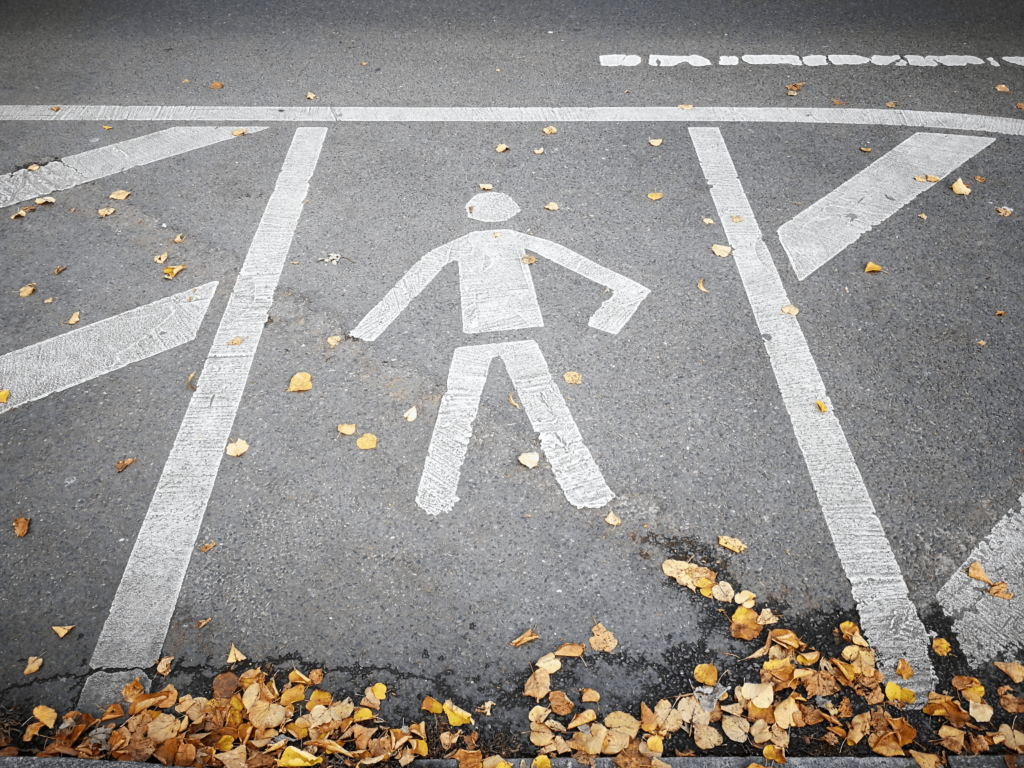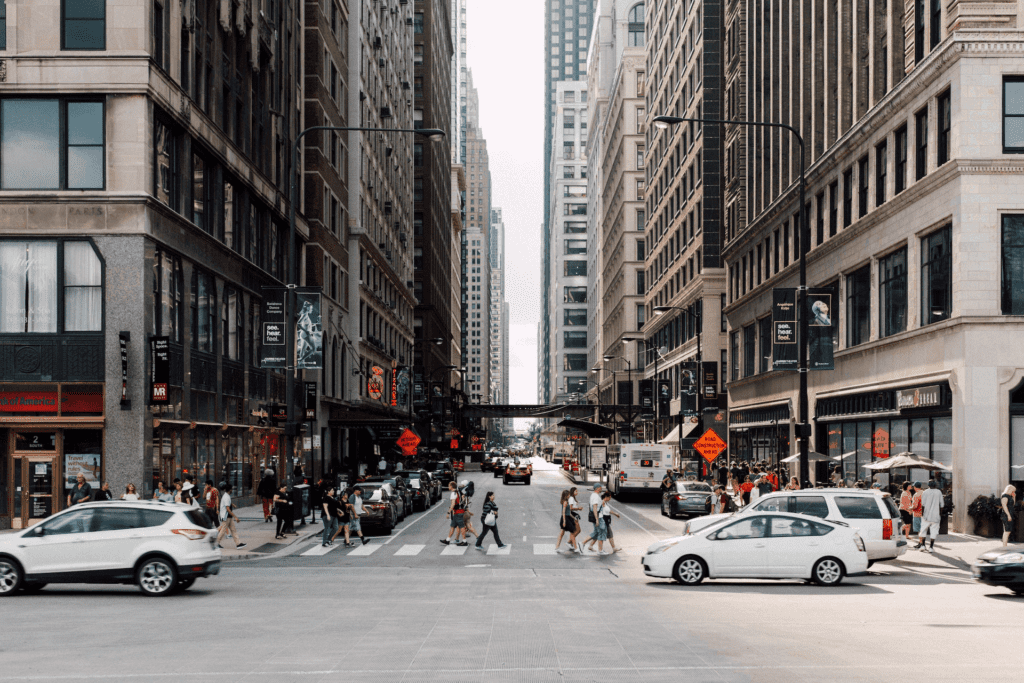More than 6,000 pedestrians died in 2020, a four percent increase from 2019. Moreover, the Pedestrian Traffic Fatalities Report revealed that California is a dangerous state for pedestrians, with 1,026 deaths in 2020.
Pedestrians across the country suffer injuries due to road accidents. For example, a female pedestrian sustained critical injuries after a car struck her in Center City, Philadelphia. The driver claimed brake failure caused the auto accident.
Another tragic incident involved a pedestrian who was hit by a motor vehicle. The motorcycle accident happened at Richmond International Airport just before 9 pm, claiming the life of a 68-year-old pedestrian.
Contact a law firm with an accident attorney if you or a loved one is involved in a road accident. A skilled lawyer can help prove the motorist’s liability, entitling you to compensation. Find an experienced legal counsel near your area for easier communication.
Key Takeaways
|
Factors Affecting Pedestrian Accident Settlement
Insurance coverage, the extent of liability, the complexity of the injuries, and emotional suffering may influence the settlement amount. Minor injuries may result in an average settlement ranging from $15,000 to $75,000, while critical injuries can lead to settlements of up to $1 million.
Insurance coverage
States have varying minimum
In contrast, Section 4509.51 of the Ohio Revised Code mandates higher policy limits. Under the law, drivers must carry at least $25,000 of auto
If the motorist only purchased the minimum coverage, it could affect the pedestrian’s injury claim. For example, if the pedestrian paid $30,000 for treating accident injuries, the $25,000 policy will not suffice. The
Moreover, not all motorists carry
Extent of liability
If the pedestrian shares fault in the accident, their compensation may be reduced.
For example, pedestrians do not always have the right of way and should wait for their turn to cross the street. However, drivers may be liable for a more significant amount if they disregard the pedestrian’s safety. In cases where a motorist disregards traffic signals and injures multiple pedestrians, they may have to pay a higher settlement amount.
A claim can be based on driver negligence, which refers to the motorist’s failure to behave with the prescribed duty of care. Its elements include the following:
- the motorist’s legal duty to the pedestrian;
- the driver’s breach of the obligation;
- the pedestrian’s injury; and
- proof that the violation caused the injury.
If a speeding motorist causes an accident, they may be liable to pay the injured pedestrian. The lawyer must prove that the speed limit violation directly caused the incident.
Likewise, the driver can invoke the negligence doctrine. For instance, a pedestrian must not engage in jaywalking. If they carelessly cross the street, resulting in a collision, the motorist can argue that they are at fault. In this case, the driver may demand compensation for repair costs.
Severity of your injuries
Life-threatening injuries usually entail larger settlement amounts.
On the other hand, serious injuries require more medical expenses. Proving severe injuries can strengthen your personal injury claim. For example, pedestrians with broken bones may need X-rays, magnetic resonance imaging (MRI), or CT scans. They may also need surgery like an internal or external fixation.
A pedestrian hit by a car can also sustain traumatic brain injuries. A moderate to severe brain injury can lead to loss of consciousness, persistent headaches, seizures, and loss of coordination. Some patients also display agitation and unusual behavior, affecting their daily lives. Hence, they need emergency surgery and rehabilitation.
Motor vehicle accidents can also cause spinal cord injuries. Like brain injuries, spinal cord injuries need immediate medical attention. Otherwise, the injured pedestrian may suffer from complete or incomplete paralysis. They also require rehabilitation to recover strength and mobility.
Moreover, scarring and disfigurement can also affect the settlement amount, as well as the location of the scars. For example, visible facial scars potentially result in a higher payout. Your attorney may argue that the scars affected your self-esteem and prevented you from enjoying daily activities.
Emotional suffering
Pedestrian accident victims may also be entitled to compensation for emotional suffering. A study published at ScienceDirect found that motor vehicle accidents can increase the risk of psychological problems. According to the researchers, victims often experience post-traumatic stress disorder (PTSD), depression, and anxiety.
In a personal injury case, the injured pedestrian may include proof of emotional distress, such as depression and anxiety. However, the
Causes of Pedestrian Accidents


The common causes of car accidents involving pedestrians include distracted driving, impaired driving, pedestrian error, and poor road conditions.
Distracted driving
In 2021, distracted driving was responsible for more than 3,000 fatalities. It accounted for 8.2 percent of the total traffic-related deaths. When distracted driving results in a pedestrian accident, it can lead to wrongful death.
For instance, a car accident in Los Angeles resulted in the death of a 65-year-old pedestrian. The woman driver was on WhatsApp while driving. According to the police department, the victim was in the marked crosswalk when he was hit.
In response to the dangers of distracted driving, states passed legislation prohibiting the use of electronic devices while driving. Section 545.424 of the Texas Transportation Code forbids people to drive while using a wireless communication device. Offenders may pay a fine of at least $25 but not more than $99. The state imposes a fine for repeat offenders ranging from $100 to $200.
Section 300.5 of Louisiana Revised Statutes is more specific since it prohibits using a device to write, send, or read a text message. The law also bans using electronic devices to access social networking sites. First-time offenders may pay a fine of not more than $500 and not more than $1,000 for second-time violators.
Similarly, Section 41-6a-1716 of the Utah Code expands the list of prohibited actions while driving. It mentions dialing a number, accessing the internet, recording videos, and taking photos. The state imposes a maximum fine of $100 on violators.
Impaired driving
Driving under the influence (DUI) is operating a vehicle while impaired by alcohol, drugs, or other substances. It can cause poor muscle coordination, slow reaction time, and loss of balance. Even a 0.02 percent blood alcohol content (BAC) can impair judgment and alter a person’s mood.
In 2020, more than 11,000 people died from drunk driving crashes. Additionally, over half of the motorists involved in fatal crashes tested positive for drug use. Impaired driving can lead to devastating consequences, such as pedestrian injuries and death. In March 2023, an alleged drunk driver killed a 72-year-old woman in Illinois.
Several state laws prohibit DUI. For instance, Section 55-10-401 of the Tennessee Code states that a person with a BAC of 0.08 percent shall not drive. The state also imposes a stricter prohibition on commercial drivers. They must not drive with a BAC of 0.04 percent.
Section 32-5A-191 of the Alabama Code strictly prohibits school bus drivers and persons below 21 from driving with a BAC of 0.02 percent. A drunk driver in Alabama may face jail time of not more than one year and pay a fine of at least $600.
Pedestrian’s error
Pedestrians may have the right of way but may still be at fault when they do not follow traffic regulations. Section 1152 of the New York Vehicle and Traffic Law requires pedestrians crossing a roadway other than crosswalks to yield the right of way to all vehicles. It also prohibits pedestrians from crossing a roadway intersection diagonally unless permitted.
Moreover, Section 14-300c of the General Statutes of Connecticut mandates pedestrians to yield the right of way to emergency vehicles. It prevents pedestrians from suddenly running into the path of a vehicle. In addition, the law prohibits drunk pedestrians from walking or standing on any part of the roadway.
An injured pedestrian who violated traffic regulations may not receive a payout from the
Poor road conditions
Poor road conditions can contribute to pedestrian accidents. For example, potholes can lead to a tire blowout, resulting in traffic accidents. The driver may lose control of their vehicle and hit a pedestrian. Moreover, cracked asphalt can reduce a driver’s ability to steer or brake effectively, potentially causing an accident.
Lack of signage is another road hazard that can lead to pedestrian accidents. The city or municipality must inform drivers of construction zones and other dangerous road conditions. Failure to do so may absolve a driver of liability in a road accident caused by the lack of signage.
The injured pedestrian may enter a personal injury settlement with the city. For example, California allows anyone to file a government claim form if they believe the state caused their injuries. However, the Government Claims Program cannot address claims for $1,000 or less against certain agencies.
Role of a Personal Injury Lawyer After a Car Accident
Your personal injury attorney can collect evidence to strengthen your claim. They can request police reports and hospital documents showing your medical treatment. Moreover, they can gather contact information and testimonies from witnesses.
An attorney also provides legal advice to ensure you receive a fair settlement. They will analyze the facts of your case and the at-fault driver’s actions. They will help you decide whether it’s best to pursue a settlement or file a personal injury lawsuit to receive compensation for non-economic and economic damages.
Most insurers often only approve a fraction of what you deserve. Hiring an experienced lawyer allows you to negotiate with the other driver’s
Did you know?
The 2020 Fatality Analysis Reporting System (FARS) revealed that 26 percent of pedestrian fatalities occurred between six and nine pm. An additional 25 percent of pedestrian deaths occurred between nine pm and midnight.
Maximize Your Settlement With the Help of a Pedestrian Accident Lawyer
Filing a pedestrian accident claim may seem daunting, but you don’t have to do it alone. A personal injury lawyer can assist and help you receive a fair settlement. They can provide you with legal advice and representation. Visit the Personal Injury Center for more information about road accidents involving cars, motorcycles, buses, trucks, and boats.
The Personal Injury Center offers free legal information on the pedestrian settlement process. Tell us about your case, so we can match you with an attorney who successfully handled similar incidents. Book your free consultation today.
FAQs on Settlement for Pedestrians
How long does a pedestrian accident settlement take?
A pedestrian accident settlement can take several weeks to months before the parties reach an agreement. However, some parties do not settle in some cases, and the case will proceed to trial.
How can you recover if the driver fled the scene?
You can seek compensation from the uninsured motorist coverage if the authorities have not found the driver. You can also get personal injury protection (PIP) coverage reimbursement.
Can you hire a personal injury attorney even without up-front expenses?
Some lawyers may offer a contingency fee agreement to their clients. In this agreement, the attorney’s fee is contingent upon the case's success. The fee is typically a percentage of the total recovery amount, ranging from 20 to 50 percent.



